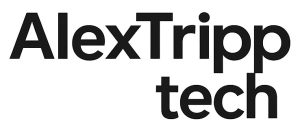Home Assistant 2025.9: Dashboard, Tile Cards, and Automations That Work Better
Home Assistant 2025.9 introduces some new ways to run your smart home. This release focuses on three areas: automation editing, dashboards, and tile cards. Each update reduces friction in daily use and you’ll spend less time fighting menus and more time getting direct control of your devices.
This article walks through the changes in detail. I cover the new automation editor, the Home Dashboard, and the tile card features. I also outline smaller integrations and tools that help you manage storage, clocks, and new devices. If you want a complete picture of 2025.9, you will find it here.
Why 2025.9 Matters
Many releases include bug fixes, small integrations, and minor layout changes. 2025.9 changes the way you interact with Home Assistant each day. Automations are easier to edit. A new Home Dashboard gives you quick summaries without endless scrolling. Tile cards bring more features into a single compact view.
These updates show the direction of the platform. The design is moving toward fewer clicks, fewer layers, and more clarity. Instead of building every piece from scratch, you now have defaults that work great out of the box.
The Automation Editor
Automations are the heart of your smart home. They connect triggers, conditions, and actions. The problem has always been editing. Long collapsible menus forced you to jump back and forth. On a large monitor the old editor kind of worked, but on a phone the process felt cramped and messy.
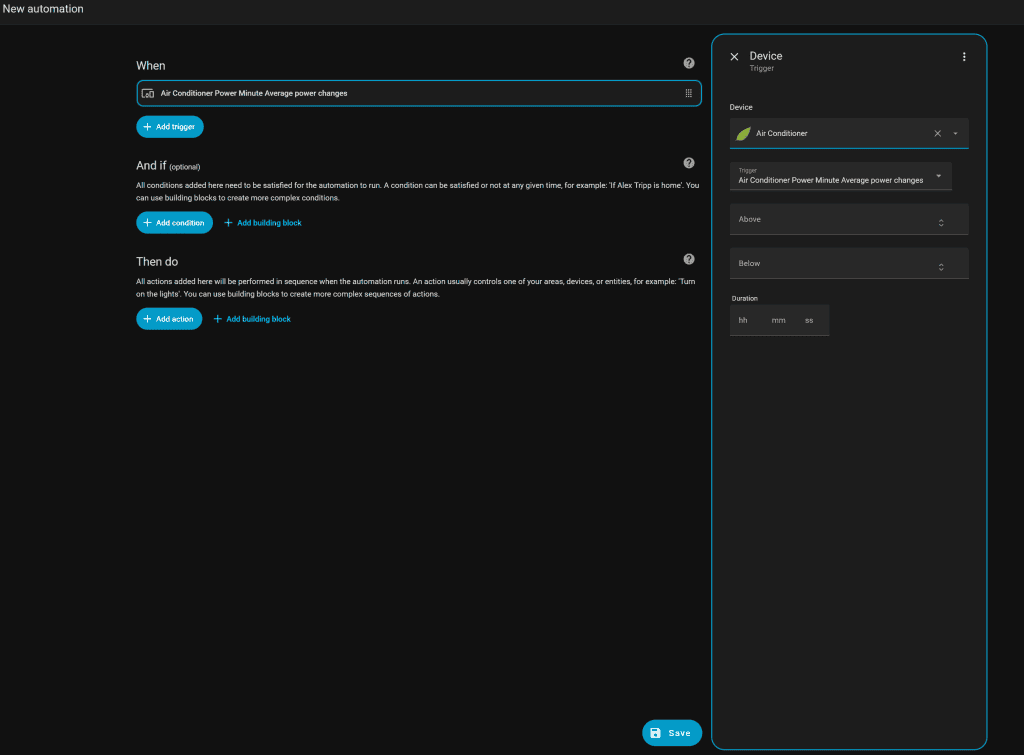
The new automation editor uses a split layout. When you click on a trigger, condition, or action, the details appear in a sidebar. The full automation stays visible on the left. You see the structure of the automation while adjusting the small parts. Context never disappears.
On mobile, the sidebar becomes a bottom sheet. You swipe it up to expand or down to shrink. This keeps the main automation in view while you tweak one section. You no longer scroll endlessly between sections.
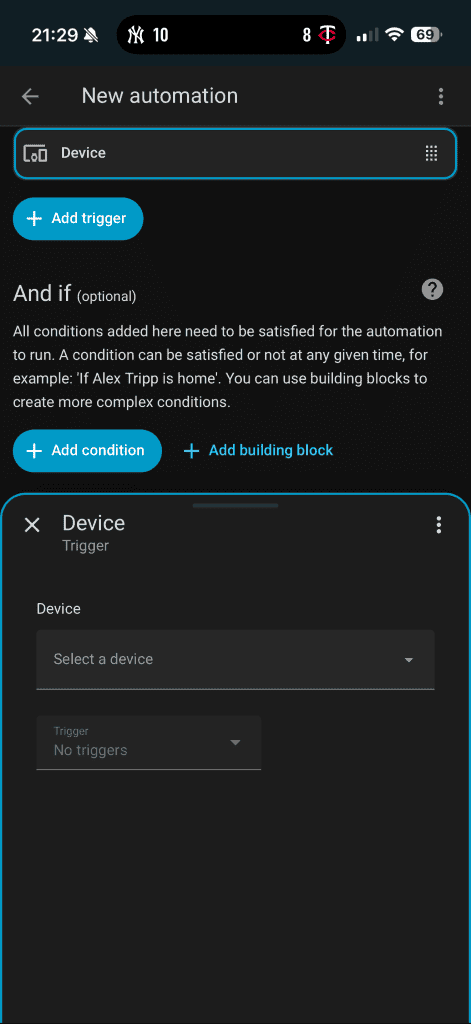
Other improvements:
- Borders now separate blocks more clearly.
- Groups are easier to spot.
- Drag-and-drop works on mobile, letting you reorder actions without switching to a desktop.
These changes make automation editing practical on both large and small screens. If you want to read more about writing automations, check the automation documentation.
The Home Dashboard
Dashboards are the daily view of your smart home. Until now, building a dashboard meant designing it yourself. You picked the cards, organized them into tabs, and adjusted the layout. Power users enjoyed the flexibility, but new users often felt lost.
The Home Dashboard in 2025.9 offers a new default. It gives you a simple overview without heavy setup. The dashboard includes four core sections:
- Lights: a quick glance at which are on and off.
- Climate: temperature, humidity, and HVAC status.
- Media: what is playing and basic controls.
- Security: locks, alarms, and sensors.
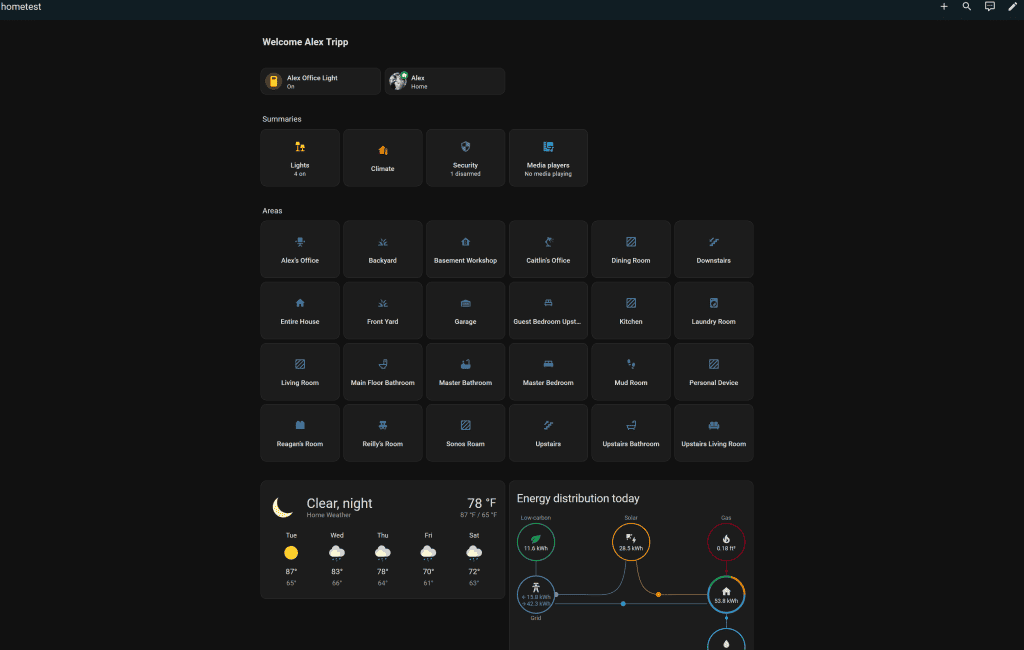
You can also filter by area. Instead of scrolling through every device, you select a room or zone. The dashboard shows only the entities in that area. This is useful in homes with dozens or hundreds of devices.
Favorites let you pin your most important controls at the top. This might include a front door lock, an energy sensor, or the lights in your living room. Favorites stay in one spot, so you do not need to search for them.
The Home Dashboard ships with weather and energy cards already in place. These are two of the most common needs for daily use. Future releases will expand the list.
At the moment, the dashboard is marked experimental. You enable it in dashboard settings rather than seeing it by default. I fully expect it to replace the current overview once feedback is collected.
For background on dashboards and UI structure, see the Lovelace UI documentation.
Tile Card Upgrades
Tile cards have grown into the main tool for dashboards. They present one entity in a compact square with simple controls. Before 2025.9, they worked for lights, switches, and basic sensors. The new release makes them much more flexible.
Trend Charts
The most visible change is trend charts. Each tile can now display a small graph of the last 24 hours. Examples:
- A temperature sensor tile shows the heat rising and falling through the day.
- A motion sensor tile shows when movement was detected.
- A power sensor tile shows when appliances were active.
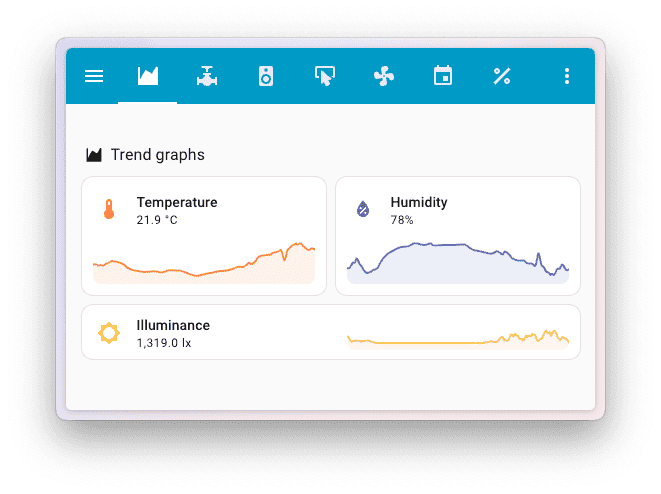
This reduces the need for separate history cards. You glance at a tile and know what happened.
Media Controls
Tiles now support media functions directly. You control volume, play, and pause from the tile itself. You no longer need to add a full media card unless you want advanced features.
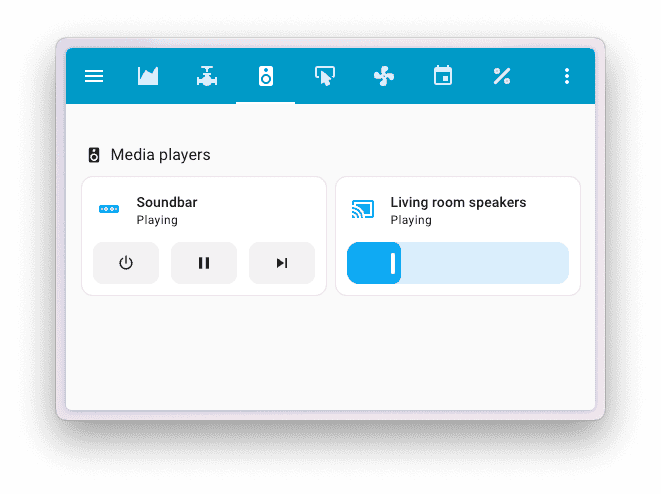
Gauges and Indicators
A new bar gauge option helps track values like battery percentage. Instead of reading a number, you see a visual bar. This makes it easier to spot low levels at a glance.
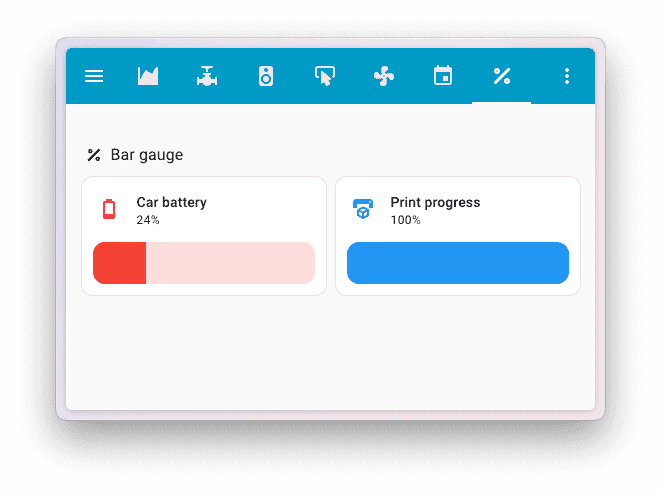
Fan Controls
Fans gain more options. Tiles let you change direction and turn oscillation on and off. Valves are now adjustable. You open or close them or set them to a percentage.
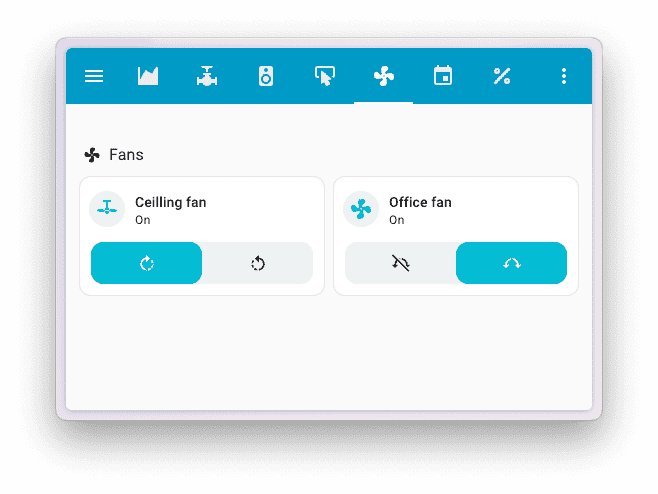
Buttons and Labels
You can assign a tile to run an automation or a script. Custom labels keep it clear what each tile does. For example, a tile labeled “Lock All Doors” runs a script that secures your house at once.
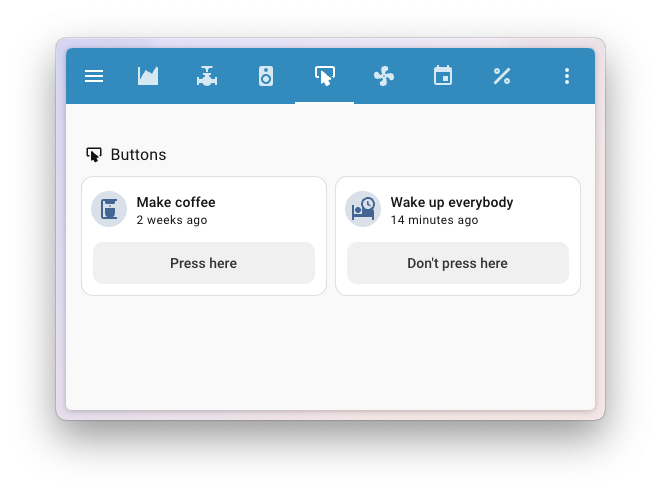
Date and Time
Tiles now handle date and datetime entities. You schedule actions directly from the dashboard. This avoids opening separate forms or configuration menus.
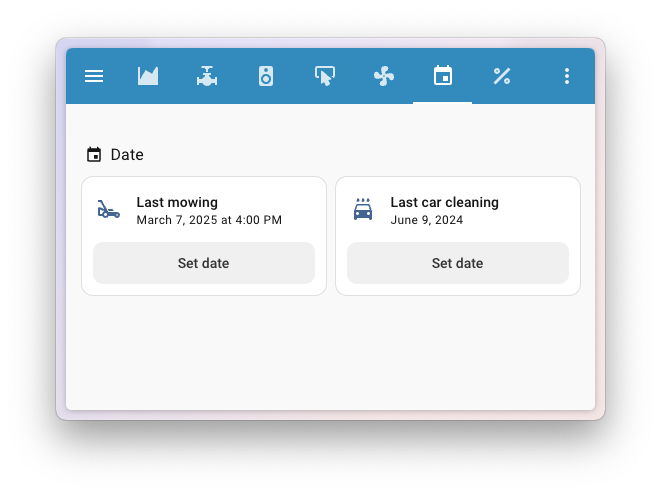
With these changes, tile cards cover most daily needs. They replace many specialized cards and reduce dashboard clutter. For setup details, see the tile card documentation.
New Integrations
Integrations connect Home Assistant to hardware and services. 2025.9 includes several new ones.
- Genie Aladdin garage doors: monitor and control supported garage openers.
- Sleep as Android: import sleep tracking data.
- Bluetooth grill thermometers: read temperatures while cooking.
These integrations expand the system into areas like health and outdoor cooking, which were less covered before.
Expanded Integrations
Existing integrations also gain more depth.
- UniFi switches: now control individual ports. Useful in homes with managed networks.
- Reolink cameras: more control options for live feeds and recordings.
- Tesla: expanded charging controls, helping EV owners manage costs and schedules.
- Enphase solar: more device support, improving solar production tracking.
These updates make your existing hardware more useful without extra effort.
Smaller Features
Two small additions stand out.
- Analog clock card: a simple visual clock for dashboards.
- Storage insights panel: a new page that shows disk usage by component. You spot problems before your system runs out of space.
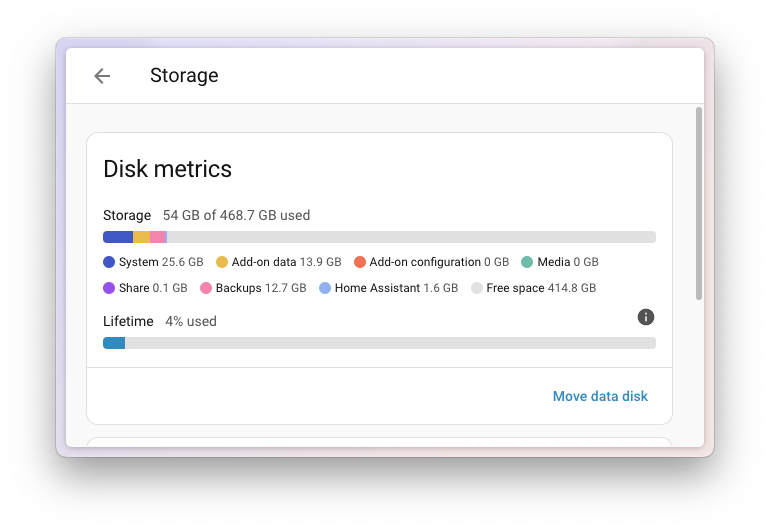
These features are not massive, but they solve common pain points.
What to Expect Next
The Home Dashboard will definitely grow in future updates. Expect more cards, more areas, and deeper integration with automations. Tile cards will likely absorb more device types. The automation editor will keep refining the balance between desktop and mobile.
Key Takeaways
- The automation editor now uses a split view. Editing is easier on desktop and mobile.
- The Home Dashboard offers summaries, area views, and favorites. It is experimental but useful today.
- Tile cards add charts, gauges, media controls, fan and valve options, buttons, and date entities.
- New integrations include Genie Aladdin garage doors, Sleep as Android, and Bluetooth grill thermometers.
- Existing integrations like UniFi, Reolink, Tesla, and Enphase solar are improved.
- Smaller additions like an analog clock and storage insights help with daily monitoring.
How do you enable the new Home Dashboard?
Go to dashboard settings, add a dashboard, and select Home Dashboard (Experimental).
It keeps the full automation visible while you edit details. On mobile, it uses a bottom sheet so you see context.
Trend charts, media controls, bar gauges, fan direction, valve settings, buttons with labels, and date inputs.
Genie Aladdin garage doors, Sleep as Android, and Bluetooth grill thermometers.
UniFi switches, Reolink cameras, Tesla charging, and Enphase solar.
